

Increasing the energy-efficiency in your buildings, processes, equipment, transport, and operations overall means delivering the same level of results as before - or even better results - while using less energy. This means costs-savings in the energy bill as many people already know, but it also has many other less known benefits. For example, it leaves your business less exposed to the price volatility and fluctuations of fuels, like natural gas and diesel. Energy-efficiency measures in buildings also help to make work spaces more comfortable and healthy, for example by reducing drafts, damp and mold, which can lead to documented increases in the productivity of workers by up to 15%.It may also help to future-proof your investments and avoid stranded assest - in the European Union, the directives on the energy performance of buildings and on energy efficiency are under discussion and some of the new of the measures antecipated towards a climate-neutral economy include the introduction of a carbon price on the polluting fuels used in the buildings and transport sectors through the interation in the European Emissions Trading Scheme, as well as setting minimum energy performance requirements for buildings to be able to enter the market, both for rental and sale of properties. All the reasons above mean that energy-efficiency measures can make your business more competitive.
Assessing the current energy performance of your company enables to reliably determine the viable improvement options and to conduct an economic assessment of the energy efficiency measures. It will also allow you to track the improvement of your company's energy performance and to quantify the savings achieved.
The first step is to map out all the energy sources and energy carriers that are used in your company's operations, including in your buildings, other stationary operations and transportation, if applicable. The energy carriers used in buildings include, at the very least, electricity, for lighting and operation of electric appliances and equipment such as water pumps and elevators. Usually other energy carriers are also used for purposes such as space heating, water heating and cooking. These may include electricity, district heating and/or cooling, natural gas, oil, coal, wood, pellets, etc.. In transport, examples include diesel, gasoline, LPG, electricity, biodiesel, hydrogen, and others.
The next step will be to gather the energy bills, covering a representative period of time, for all the energy carriers that you have identified. Usually the period of one year is adequate, so that you will be able to capture seasonal variations in your company's activity. With these bills in your hand, you can now calculate the annual expenditure with each of the energy carriers used. Typically, the energy carriers that are resposible for higher costs will also be the ones that offer most opportunities for improvement and savings, and therefore those are the ones you should prioritize for analysis and action.
Having this big picture, you should then refine the analysis further, to gain an understanding of the energy consumption at your different locations, operations and equipments. Once again, it is usually with the largest enegy consumers in a company that the most interesting opportunities for improvement and savings lie. It is this phase that expert help is recommended to ensure an adeaqute analysis of the current situation and identification and evaluation of possible alternative measures.
Not necessarily. A smart meter enables the measurement of electricity flow in two directions: both the electricity consumed from the grid and the electricity injected into the grid from onsite generation. So a smart meter is essential for an onsite renewable energy producer that wants to sell electricity to the grid, or to store electricity in the grid - the smart meter records how much electricity comes in, and how much electricity goes out of the site, for billing purposes.
In addition, a smart meter records not only the consumption of electric energy but also voltage levels, current, and power factor. The smart meter provides such data both to the consumer and to the grid operator. This information can be used to reduce the energy bill, for example by shifting large energy consumtion or loads to periods of the day when the electricity is cheaper.
Improving the energy performance of your company can deliver multiple benefits. The main benefits include energy cost-savings and potential tax reduction, contribution to increased profitability and competitiveness of the organization, reduction of business risks, namely by decreased exposure to fossil fuel prices´ fluctuation, and the reduction of the environmental footprint of the company by decreasing greenhouse gas emissions and air polution emissions related to its energy production and use.
An Energy Management System is a systematic approach for the continual improvement of an Organization's energy performance, including energy efficiency, energy uses and consumption. This systematic approach includes management activities, processes and procedures to establish and implement the Organization's own energy policy, objectives and targets, for enhanced effectivess.
The International Standards Organization (ISO) has developed a voluntary standard (non-mandatory) which defines requirements and guidance for the establishment, implemention, maintainance and improvement of energy management systems. The effectiveness of this approach has been tested and proven in organizations of different nature throughout the world and therefore, its use raises the level of credibility of the efforts and results of energy management systems.
At the most basic level, your staff will be the ones implementing your company's energy and environmental policies and translating them into reality in operations, planning and investments. It is absolutely essential that you communicate with them clearly and provide them the capacity needed so that they understand what they need to do for the successful implementation of energy and environmental management systems.
On the other hand, your staff are the ones dealing with the challenges of daily opperations and they are in the best positions to suggest improvements that can lead to better energy and environmental performance. The first step is to raise their awareness to the fact that suggestions that improve the energy and environmental performance of the company will also have a positive impact on the financial performance of the company, and potentially on the security of their jobs. Some workers may say that it is not their job to optimize the processes. There are two alternatives to overcome this initial resistance. The most widely used and most recommended to start such a process, is to provide them rewards for the good suggestions that effectively improve the energy and environmental performance of the company - this will generating a positive attitude from the employees, motivate them to lean about energy and environmental management and to share information.
In general, the total cost of ownsership of conventional energy supply systems running on fossil fuels, such as oil or natural gas, is much more expensive than the total cost of ownership of renewable energy systems such as solar or wind energy. The reason being that while conventional systems may have a lower purchase costs, you will have to pay fuel costs for the operation of the equipment over its entire useful life - it is during the operation phase that the bulk of the costs are incured, while with a solar energy system you only have to purchase the equipment and you get the renewable energy supply from the sun for free - the bulk of the costs is spent in the acquisition phase.
Another big advantage of renewable energy systems is that they are not exposed to the volatily and price-uncertainty of fossil fuels, such as coal, oil and gas. The invasion of Ukraine by Russia only comes to show that such dependency on energy imports can lead to very significant rises in the cost of products. In other words, renewable energy contributes to the self-relience and resilience of your business in face of international crisis.
Whether you install renewable energy systems on site or you sign a Purchase Power Agreement (PPA) with an independent power producer of renewable energy, investing in renewable energy means that you will have more certainty about the future energy price and your overall energy bill than if your business is heavily reliant on fossil fuels.
Companies with fleets of passenger cars or light commercial vehicles and vans that make a large number of kilometers or miles per year, will very likely be better served with an electric-vehicle (EV) fleet than with a fleet of conventional diesel or gasoline vehicles. Although EVs have a higher acquisition cost, the energy efficiency of the electric vehicle - approximately 95% - is much higer than the energy efficiency of the internal combustion engine - approximately 33%, and the comparative cost of electricity and fuels also plays a decisive role. All this considered, translates into a lower cost per kilometer (or cost per mile) for the EVs, in comparison with coventional vehicles.
Nevertheless, sustainable mobility in businesses is much more than optimizing the motorization of vehicles. Rout optimization, avoiding unnecessary weight, avoiding trips with no load or partial load and training to improve driver performance are just a few of the measures that can improve the performance of your fleet and contribute to the competitiveness of your business.
On the other hand, if your company employs a large number of workers, offering them sustainable mobility options may significantly improve the quality of life, health and satisfaction levels of your staff. If your company is only accessible by car, this may mean that arriving to work, or leaving for home, translates into a lot of time spent stuck in traffic, exposed to noise and air pollution, sitting in the car. For relatively short distances, creating conditions for non-mortozided options such as walking and cycling, creates the opportunity for your office staff to remain physically active and healthy. For longer distances, improving public transport connections, creating incentives, or offering other collective transport options, may help your staff by reducing their transport costs and avoiding the stress of driving and parking everyday. Providing such sustainable mobility solutions may mean having to collaborate with the municipality and other local authorities but it shows your commitment to the well-being of your employees and is an important contribution to the community which may open the door to other collaboration opportunities.

Improving the energy performance of your company can deliver multiple benefits. In an introductory meeting with the company's management, our team will present these potential benefits, such as energy cost-savings, potential tax reduction, increased profitability and competitiveness, and well as introduce the concept of energy management, and propose a work programme for validation. Going forward, it is also necessary to define the scope of the activities that will follow, including company locations and facilities to be covered.
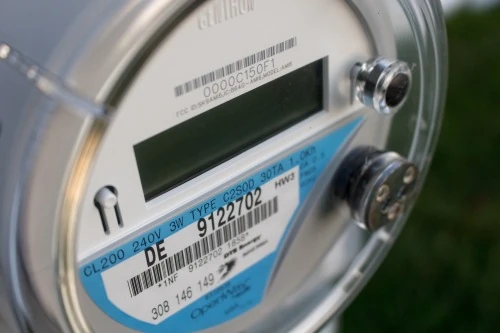
The next step is to conduct a diagnostic of the current energy performance of the company, in accordance with current national and international standards and good practices for energy audits. Our team conducts an initial site visit following a pre-agreed structured program, which begins with a meeting with the operations manager to briefly explain the objectives of the activities. A presentation may also be given to additional staff whose engagement is necessary to support the site visit and data collection. The site visit concludes with closing meetings to share and discuss a summary of the main findings and clarify any questions that may have arrised.
The site visit is complemented with the collection of additional data and information.

The information and data collected in the previsous phase is processed and analyzed by our team to charaterize the current energy performance of your company, including through the use of relevant indicators. The current energy performance is the baseline against which possible measures for the improvement of energy performance, including energy efficiency, will be evaluated. Based on this evaluation, a report is elaborated with recommendations to support management in the selection of measures for improvement of energy performance of the organization.

Upon management decision, measures for improment of energy performance are implemented, monitored and evaluated to confirm the achievements in terms of energy and cost savings. Building on these positive results, this is an opportune moment for the company to implement its own energy management system. Our team can support you in the development and and implemention of a tailor-made energy management system that is in line with current standards and best practices, customized to better suit the reality and needs of your organization. Our services include supporting the following activities: development of a simple energy policy, an action plan, a monitoring plan, procurement guidelines and delivery of training and awareness raising sessions for staff. The standard approach is to follow an iterative Plan-Do-Check-Act methodology, with internal auditing and preparation of reports to support the review of the system by management and contribute to continuous improvement of energy performance.
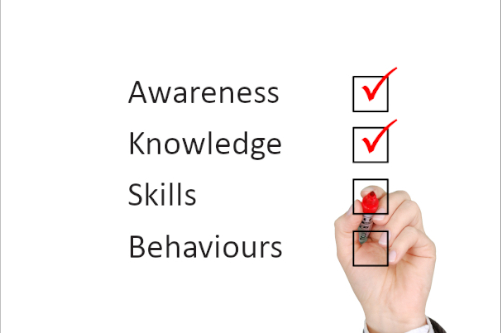
We support organizations and communities in the development and implementation of capacity-building programmes on clean energy, climate-neutrality, circular economy and sustainability for different target-groups, namely for staff, technical staff, public desision-makers, partner organizations or stakeholders, depending on the existing needs.
Once the overall objectives and target-group(s) of the training are well defined, different methods can be used to assess the existing capacity building needs depending on the size and heteregeneity of the target-group(s). Examples include carrying-out semi-structured interviews and conducting surveys. The processing of the results will inform the next steps and help define specific training objectives.

Building on the capacity building needs identified and on any eventual learning resources already available, the training delivery channels and formats are selected and the training program is developed. Possible formats include face-to-face training and remote online training in synchronous mode - to enable direct interaction between the trainer and trainees - and assynchronous mode - to enable the trainee to study and learn at his/hers own pace.
This step includes developing the course sylabus, the materials for training delivery, the learning materials to support study, as well as communication materials to disseminate the training.
A preliminary training run can be used to test the training's structure and contents, and to obtain inputs for their improvement and further dissemination.
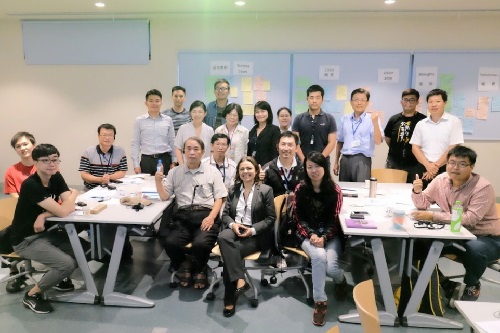
To be effective in contributing to behaviour change, all the training modules include elements to enhance the motivation, knowledge and skills of the trainees.
Training is delivered according to the training plan, making use of the learning resources and encouraging active participation throughout. Group dynamics are encouraged to the extent possible, as a mechanism for exchange of experiences, building a better understanding of the subjects, facilitating team building and development of a support network, and promoting the further emotional connection and commitment of the trainees.
The methodologies that are most suitable for the achievement of the training objectives are used. Whenever possible, hands-on methodologies are preferred, as these tend to be the most effective for learning new skills.
Questions are encouraged and clarified throughout the training.
At the end of training, the Trainees' performance is evaluated against the learning objectives.

At the end of training, the Trainees are invited to evaluate the training in its different components. The input received is then used to improve the training program and materials for a next training cycle.
If possible, six months after the end of training, the Trainees are again invited to evaluate the training by providing information on how they have used their new learned knowledge and skills in their own work. The input received is then used to improve the training program and materials for a next training cycle, while also supporting further dissemination of the training.

To be able to facilitate stakeholder dialogue workshops in a productive manner and geared towards consensus-building and cooperation, it is essential to prepare well. An initial scoping and review phase will provide essential information to support the discussions. The review should provide a comprehensive overview of the current situation, enable preliminary identification of critical aspects and identification of key stakeholders and their priorities and concerns.
This initial scoping and review will also enable the planning of the entire stakeholder engagement process, including channels and formats to be used, convening process, and desired outputs and outcomes.
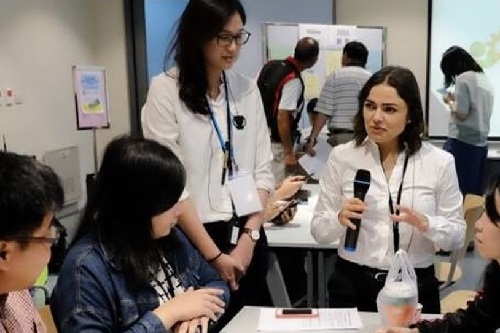
We support organizations and communities in the coordination and facilitation of complex multi-stakeholder engagement processes for the development and deepening of institutional dialoge, cooperations, co-design and local-ownership and participation in the implementation of solutions towards sustainability.
Depending on the desired outputs and outcomes of the stakeholder engagement process, different channels and formats may be selected and developed for implementation. Examples of possible formats for stakeholder engagement include advisory committees, focus groups, facilitated dialogue and consensus-building workshops, among others. Community meetings, for example, are an essential component of participatory governance and of locally-owned and locally-driven climate strategies.
The convening process itself deserves careful consideration. Invitations should present a clear mandate and clear objectives, highlighting the importance of participation and the sought out inputs from the invitee.
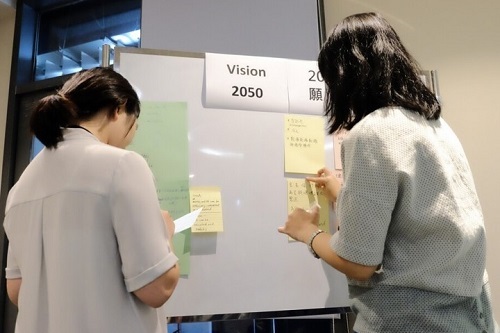
We support organizations and communities in the development of overarching programmes and strategies for the transition to clean energy, circular economy and sustainability through the convening and facilitation of stakeholder engagement workshops and other participatory mechanisms.
Stakeholder engagement processes can be used to generate specific outputs of great value for the management of organizational and societal transitions. Examples of possible intended outputs include:
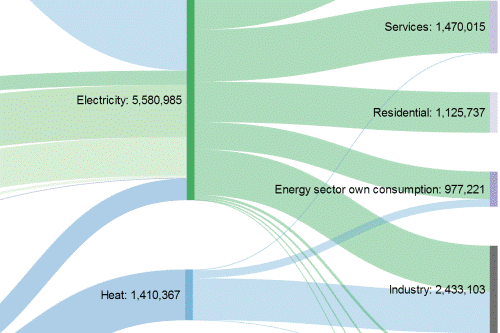
We support organizations and communities in multiple roles of the programme and project development cycle, always ensuring that we only engage in processes where we have no conflict of interests. Examples include:
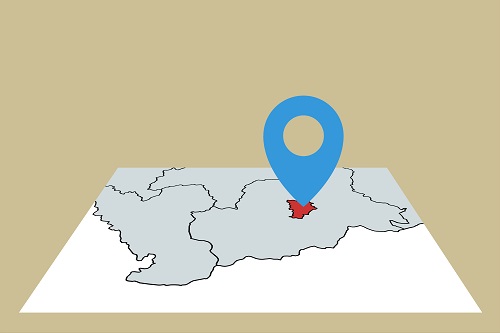
The first step is to understand the requirements and expectations that your Climate Strategy must meet. For example, how does it integrate with national and local policies and regulations? Are the monitoring and reporting methodologies pre-determined and mandatory? Is your Climate Strategy built around a particular unique feature of your company or a sector that is of major relevance to the local economy? Which locations, facilities and activities, in own operations, should be covered? Are activities from your suppliers, or other entities over which you excert a certain degree of influence, to be covered in the strategy? The answers to these and other scoping questions will condition the choice of methods for defining targets, quantifying greenhouse gas emissions, monitoring and reporting.
We can support you in the implementation of methodologies such as the ISO Standard for quantification and reporting of greenhouse gas emissions and removals, at the project level and at the organizational level (ISO 14064).

Once the scope and methodology are clearly defined, it is time to start developing your community's Greenhouse Gas (GHG) emissions and removals inventory - it will provide crucial information to inform the planning phase. We will support you in implementing a process to ensure that your inventory follows the best-practices' principles and eases quality assurances and verification. This process often includes liaising with relevant departments who can provide relevant data for the development of the inventory and who might actively contribute to the implementation and monitoring of the Climate Strategy. Principles such as relevance, completeness, consistency, transparency and accuracy should be observed. These principles are crucial to ensure that the inventories of different years are coherent and comparable, thus enabling future monitoring and evaluation of performance in the implementation of the Climate Strategy and Action Plan. The following inventories should be planned for:
The GHG emissions inventory is complemented with additional information to complete the characterization of the starting point.
"Business-as-usual" scenarios are developed to assess how the situation will likely evolve in the absence of the Climate Strategy and Action Plan. This initial assessment will inform the next planning steps.

Mapping and engagement of key stakeholders, both internal and external, is highly recommended for the success of the entire initiative. Establishing an open and constructive dialogue between the partners will bring to light different perspectives, expertise and data, and open possibilities for cooperation and synergies. A diverse and inclusive engagement process will enable the co-development of locally-adequate strategies and solutions to address even the most complex situations. The more inclusive and participatory your planning process is, the more likely it is that you will get a broad base of support, motivation and ownership, all of which will be crucial for a successful implementation of the Climate Strategy and Plan.
Experts should be engaged explicitly in each stage of the stakeholders' dialogue to ensure that the necessary expertise and preliminary technical assessments are made available in a timely and transparent manner to support productive dialogues and help determine the feasibility of promissing options.
Possible activities with which we can support you include:

We can support you in different implementation stages and activities, including:
We can also support you in the implementation of the monitoring plan and evaluation of progress against the Climate Strategy and Plan's objectives, including components such as greenhouse gas emissions, energy savings, cost savings, improvement of environmental parameters, among other aspects that may be relevant for your organization.

In the European Union Member States from 31 December 2020 onwards all new buildings shall be nearly zero-energy, meaning that they will be required to have very low energy needs, which should be covered to a large extent by renewable energy produced on-site or nearby (by force of the Energy Performance of Buildings Directive published in 2010). In addition, the revision of the Energy Performance Buildings Directive is expected to set minimum energy performance requirements for existing buildings to enter the market, for property rental and sale.
How will this affect your business operations and assets’ value? There is a clear correlation between the energy performance of buildings and the assets’ market value, according to a recent study conducted by the Energy Efficiency Financial Institutions Group (EEFIG) – a group of financial sector experts hosted by the European Commission and the United Nations Finance Initiative.
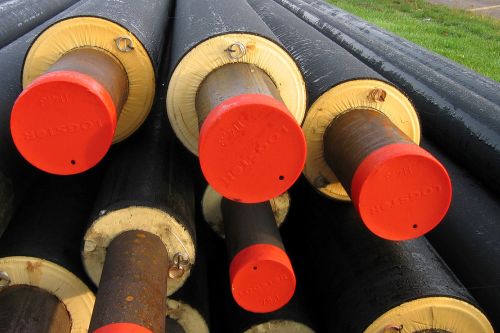
In Europe, the energy wasted as heat by conventional electricity power plants exceeds the heat consumed by all buildings (Heat Roadmap Europe, 2019). In the industry and services sectors there are also numerous processes that release surplus heat to the atmosphere. Depending on the temperature and pressure of that heat, it could potentially be reused as an energy source for complementary activities.
District heating and cooling systems have the potential to significantly increase the efficiency of primary energy use by seizing locally available surplus heat or free natural cooling, by enabling energy cascading between different consumers and enhancing the integration of renewable energy. Smart district energy systems also offer the opportunity for sector coupling between heating / cooling and the electricity system. Engaging stakeholders in the early planning of new industrial and service parks and new urban developments (or redevelopments) enables synergies and cost-savings in infrastructure investments. Integrated infrastructure and energy planning may also avoid locking-in inefficient and carbon-intensive solutions. Interested in developing a district energy concept or business model?

Businesses often miss the opportunity to implement cost-effective energy efficiency measures, even measures that have no costs or that are very affordable. These “low-hanging fruits” can deliver immediate efficiency improvements or “quick wins” and reduce costs by up to 10%. Longer-term targeted investments can deliver even higher cost savings, typically up to 20-25% (Carbon Trust, 2018) and potentially more. Internationally tested and proven methodologies offer a systematic approach to help you identify and seize the energy savings potential while decreasing business risks and increasing productivity and client satisfaction. Has your organization identified the cost-effective energy savings at hand? Do you have a management system in place to deliver continuous energy performance improvement? Are there financial support programmes available?
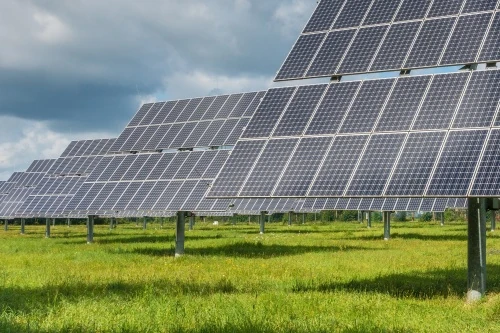
In parallel, renewable energy is becoming increasingly cost competitive, offering citizens, businesses and communities the opportunity to use local/regional energy resources to improve access and security of supply, while keeping money circulating in the regional economy. Companies also have the opportunity to secure a stable low-cost electriciy price by signing a Power Purchase Agreement (PPA), and thus avoid exposure to the price fluctuations of fossil fuels.
The illegal invasion of Ukraine by Russia and its impacts on energy prices and energy availability also remind us that fossil fuel prices are highly volatile and entail significant business risks. More than ever, it is clear that energy efficiency and renewable energy bring benefits that go well beyond the aspects that are quantified in a simple financial assessment. Neverthless, a positive financial assessment is a crucial factor to determine the viability of projects in the private sector and we can support you in such assessments.
Do you need support to assess the viability of renewable energy projects or related innovative business concepts?
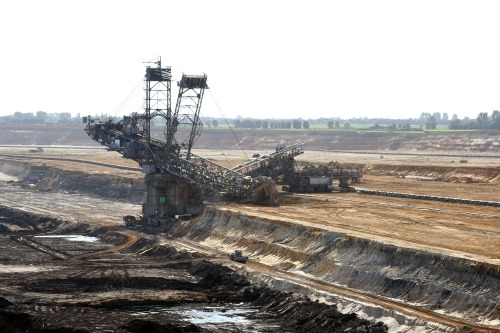
Renewable energy is also becoming increasingly competitive in the wholesale electricity market. Some coal fired power plants cannot compete and no longer operate the number of hours needed to ensure their profitability. They are at risk of becoming stranded assets. Not surprisingly in 2018 the net renewable power capacity additions were nearly twice as much as the added capacity of all other sources. This was the 4th consecutive year in which net renewable power capacity additions were larger than the net additions of fossil and nuclear power generation combined (REN21, 2019).
The illegal invasion of Ukraine by Russia and its impacts on energy prices and energy availability also remind us that fossil fuel prices are highly volatile and entail significant business risks.
In Europe, the revision of the Energy Efficiency Directive is expected to introduce a carbon price for the fuels used in the buildings through the European Emissions Trading Scheme, thus increasing the price of polluting fossil fuels such as oil or natural gas. These price signals may potentially render existing systems obsolete due to higher operation costs in comparison with alternative technologies. Do you need support to consider investment alternatives?
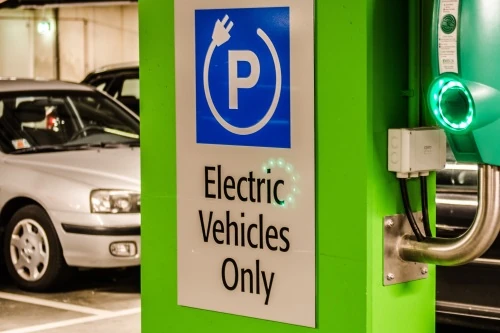
Electric mobility, transport intermodality, urban logistics are areas of emerging innovation which can deliver significant societal benefits. The promotion of non-motorized mobility and mass-transit oriented development has an important role to play in making cities and urban developments more livable and breathable.
The illegal invasion of Ukraine by Russia and its impacts on energy prices and energy availability also remind us that fossil fuel prices are highly volatile and entail significant business risks.
In 2018, the European Renewable Energy Directive recast defined sustainability criteria and minimum greenhouse gas emissions saving thresholds for biofuels. Currently ongoing, the revision of the European Energy Efficiency Directive is expected to introduce a carbon price for the fuels used in the transport sector through the European Emissions Trading Scheme, thus increasing the price of polluting fossil fuels such as oil or natural gas. These price signals may potentially render existing vehicle fleets obsolete due to higher operation costs in comparison with alternative less-polluting technologies.
Are you considering integrated energy and transport solutions for your project? Which energy carriers will reduce the environmental impacts and business risks of your future operations? Which energy value-chains are more efficient and cost-effective?

In 2016, the Paris Agreement entered into force, ratified by 176 countries, giving a global response to the threat of climate change to health, food production and other human and natural systems (UNFCCC, 2018). Back in 2019, all but 4 Member States of the EU-28 consider that climate neutrality must be achieved by 2050 (European Council conclusions, 20 June 2019). In 2020, the European Union approved its Long-Term Strategy to reach climate-neutrality by 2050, in line with the Paris Agreement. In 2021, the European Commission presented the “Fit for 55” package of draft legislation on energy and climate to support the political pledge to cut greenhouse-gas emissions by at least 55% in 2030 compared with 1990 levels and strengthen the EU's position as a global climate leader.
Interested in measuring, reducing and eventually offsetting the residual greenhouse gas emissions of your organization or community?

Climate-neutrality requires a very significant transformation of the economy, including the decarbonization of energy generation and more circular productive systems, reducing waste and energy leakage through enhanced energy and material loops and the rethinking of products and value-chains. Circular economy principles can be considered throughout products’ life, from the design phase, production process, resource use and sourcing, through to product use and waste management (EU action plan for the Circular Economy, 2015).
Knowing the life cycle impacts of your products will help you identify where innovation is needed to mitigate business risks, comply with legal requirements and remain competitive. Are your products and supply chains future-proofed?
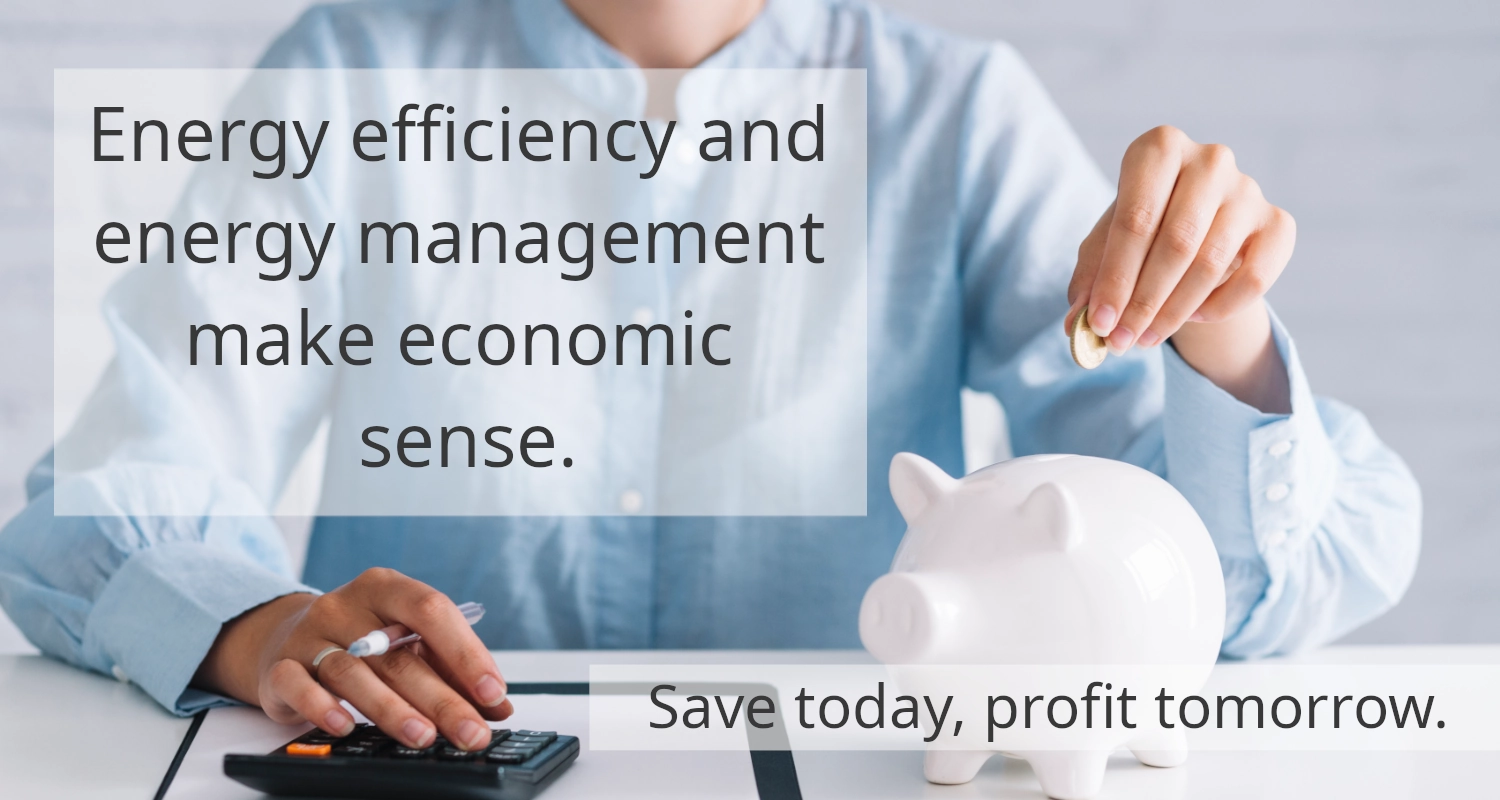
Is your organization fit for the Clean Energy Transition and the Low-Carbon Circular Economy?Seize the Potential of energy savings and decarbonization to save money and resources, grow your business and future-proof investments, while safeguarding workers' health, the environment and helping the local economy.We are experts on strategies and solutions towards Clean Energy and Sustainability.Get in touch, we will be glad to support you in defining and implementing the best sustainability strategy and solutions for your organization. |